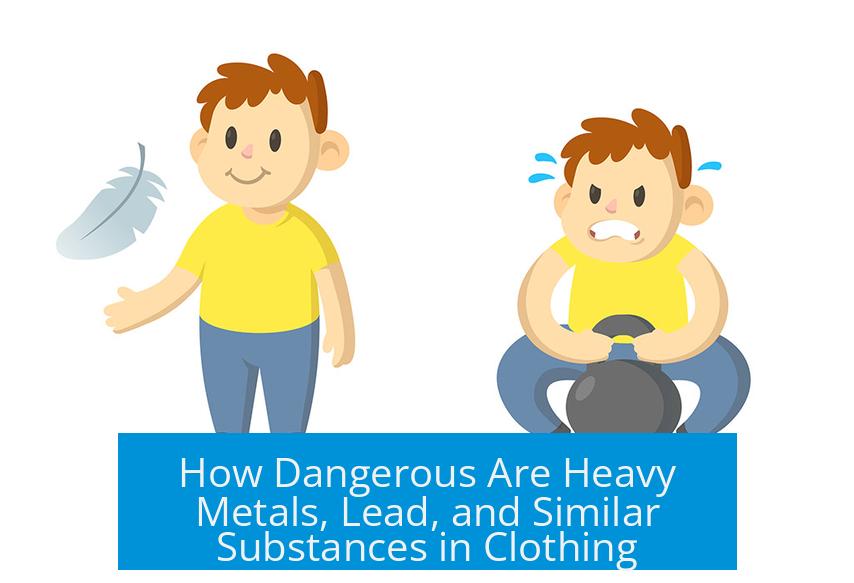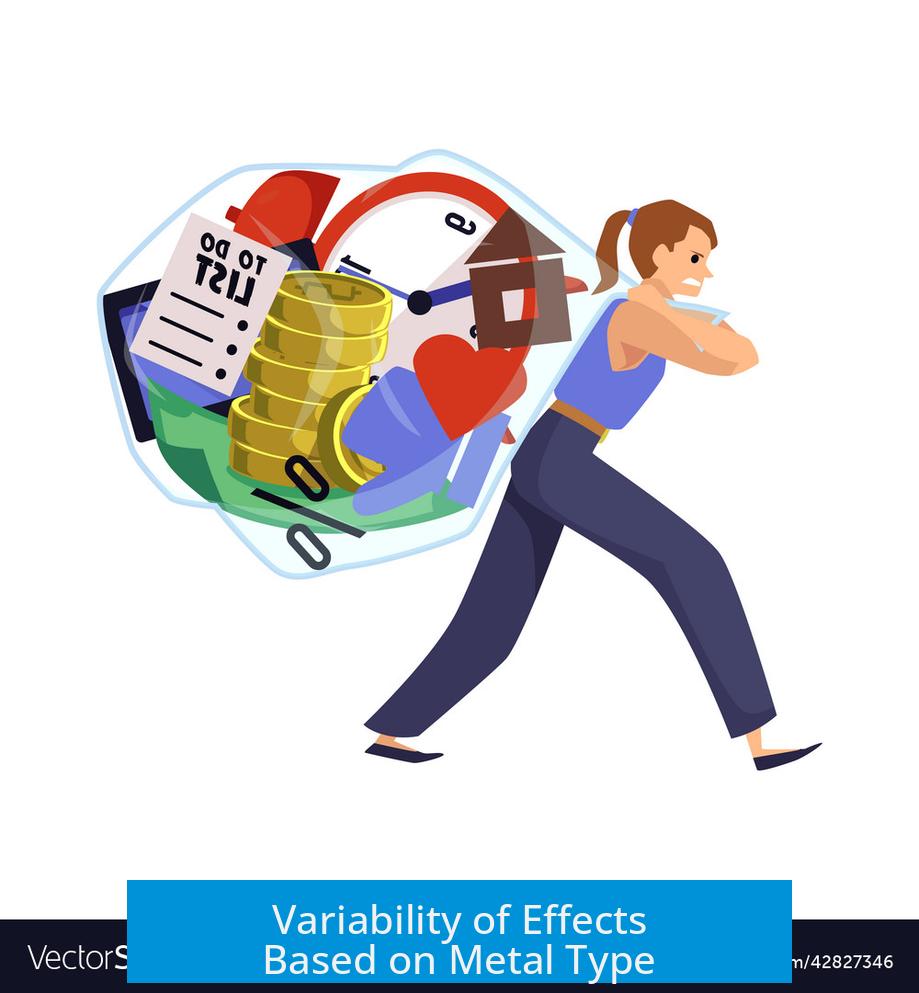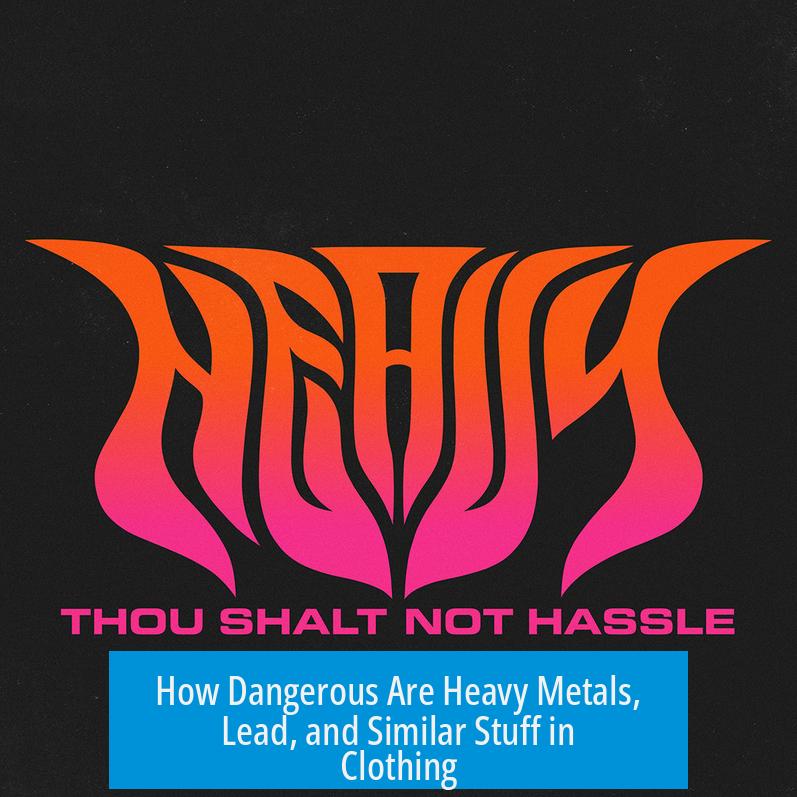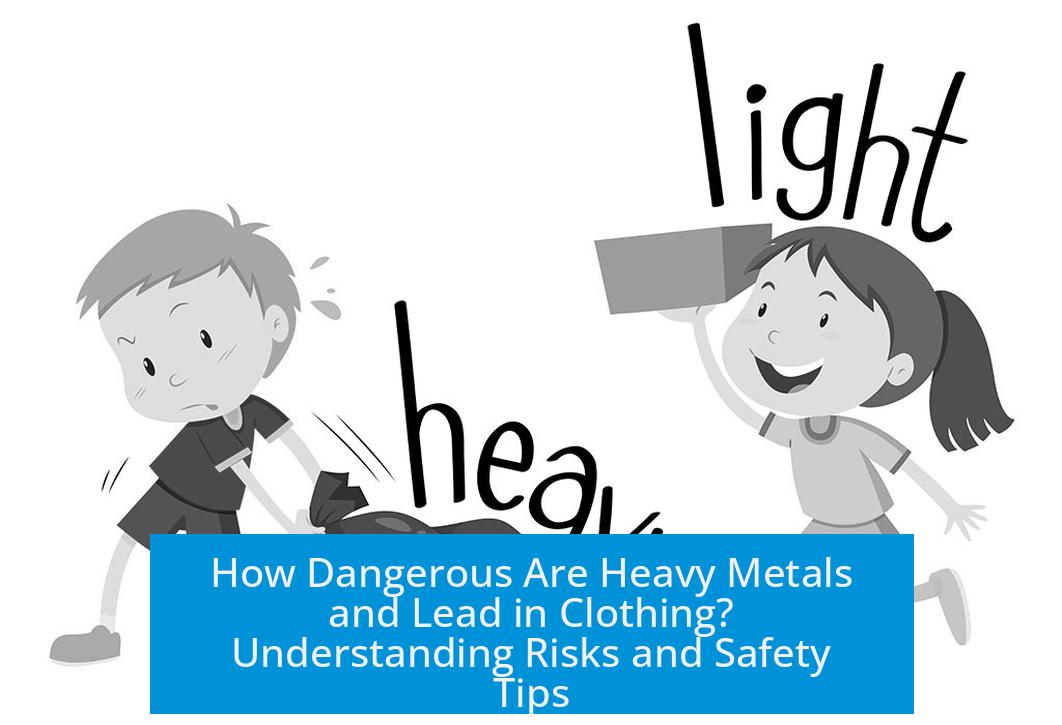How Dangerous Are Heavy Metals, Lead, and Similar Substances in Clothing?

Heavy metals like lead in clothing pose risks mainly through ingestion rather than skin contact. While occasional skin contact with these metals is unlikely to cause harm, ingestion can lead to heavy metal poisoning. This distinction is critical in assessing the dangers of wearing contaminated textiles.
Lead in Clothing
Lead becomes dangerous primarily when ingested. Skin contact with lead-containing fabrics generally does not result in significant absorption unless the metal is in a solvent that facilitates passage through skin.
Children’s clothing poses a higher risk because toddlers often put garments in their mouths, increasing the chance of ingesting lead particles.
Some clothing items have exhibited lead concentrations reaching percentage levels. Such high amounts raise serious health concerns, especially for vulnerable groups.
Washing clothing does not effectively remove lead. The metal binds with dyes and fibers in a way that typical laundering cannot eliminate. This challenges some misconceptions about cleaning contaminated apparel.
Absorption and Toxicity of Heavy Metals
- Skin absorption of heavy metals is usually low, except when the metal is dissolved in solvents that enhance skin permeability.
- Ingestion remains the principal route through which toxicity occurs.
- Mercury, while hazardous, is not readily absorbed through brief skin contact, such as touching liquid mercury.
Variability of Effects Based on Metal Type

Not all heavy metals carry the same level of risk. Some, like silver and gold, have recognized beneficial uses. Silver is used in medical dressings for its antimicrobial properties, and cobalt is part of vitamin B12, essential for health.
Conversely, some forms of cobalt are radioactive and highly toxic. The danger depends strongly on the metal’s chemical form and exposure level.
Historical Context
Lead was historically used in paints and pigments, including white paint. Exposure to radioactive substances like radium painted on watch hands caused serious health issues famously highlighted by Marie Curie’s death.
These examples underscore the importance of understanding chemical risks associated with materials in contact with humans.
Key Takeaways
- Lead and other heavy metals in clothing are dangerous mainly if ingested, not through casual skin contact.
- Children face greater risk because they tend to chew on clothes, increasing lead ingestion chances.
- Heavy metals bind strongly to fabric dyes; washing does not reliably remove them.
- Different heavy metals have varying effects—some are essential for health, others are toxic or radioactive.
- Historical use of lead and radioactive materials in consumer products led to significant health consequences.
How Dangerous Are Heavy Metals, Lead, and Similar Stuff in Clothing?

So, how dangerous are heavy metals like lead hiding in your clothes? The short and bold answer: lead is primarily harmful if **you eat it** (yes, you read that right). If you’re not nibbling on your jeans or munching on your child’s jacket, the risk stays pretty low. But of course, the story gets richer. Let’s unravel this fabric of facts.
Heavy metals and lead in clothing often sound scarier than a late-night thriller. But the truth blends some science, caution, and a sprinkle of real-life practicality. Step inside as we explore why a little lead in your shirt isn’t automatically a health nightmare and when it truly becomes a red flag.
Lead in Clothes? Wait, Should You Worry?
The main risk with lead contamination in clothing comes from **ingestion**—literally swallowing lead particles. This risk spikes if fabrics are chewed or sucked on, especially by kids. Casual skin contact? Usually, no biggie.
Think about your own wardrobe habits. How often do you chew on your T-shirt collar or jeans? Probably never. But toddlers might, and that’s why children’s clothing is an important concern.
Why Children’s Clothes Are a Bigger Deal
Kids are curious. They put clothes in their mouths. The issue is serious here because lead particles can transfer from fabric to mouth, entering the body. Even small lead amounts can build up and cause health issues over time in young bodies. So, heavy metals and lead in kids’ clothes? Definitely pay attention.
How Much Lead Are We Talking About?

Some unfortunate brands have been caught with clothing containing up to **several percentage points of lead contamination**. That sounds scary—and it should. These are levels high enough to alarm regulators worldwide. Imagine a T-shirt where 1-3% of the fabric’s weight is lead. Washing it does little to reduce this hazard, so don’t rely on laundry hacks.
And here’s a myth bust: washing won’t magically sweep lead off your clothes but leave colors intact. Lead particles cling tightly to fabrics. So, no shortcuts!
Skin Absorption: Less Spooky Than It Sounds
Heavy metals need special conditions—like certain solvents—to penetrate skin easily. For example, holding liquid mercury briefly might feel odd but won’t necessarily cause deep poisoning fast. So, unless your clothes are soaked in chemical solvents, heavy metals won’t just seep through your skin like a horror movie villain.
The Metal Family Is Diverse: Some Friends, Some Foes
Not all heavy metals are villains. Silver and gold, for example, have beneficial uses in medicine and jewelry. Silver dressings fight infections, and cobalt appears in vitamin B12, essential for our health.
But—and it’s a big but—the flip side shows cobalt can be highly radioactive in certain forms, used in irradiators. This illustrates that whether a metal is harmful or helpful heavily depends on its form and exposure context.
The Past’s Lessons: Lead in Paint and Its Dangers

It turns out, lead exposure isn’t a new problem. In the past, lead was popular in white paint, pigments, and other consumer products. Radium, the radioactive stuff that once made watch hands glow, shared the stage in dangerous chemical history.
Marie Curie’s pioneering research taught us the hard truth about radioactive materials and their deadly risks. Her legacy reminds us to approach all heavy metals with care, respect, and scientific understanding.
Practical Tips for Clothing Safety
- Don’t let kids chew on clothes. This remains the biggest risk for lead ingestion.
- Buy from reputable brands. Manufacturers that follow safety standards are less likely to have heavy metal contamination.
- Stay informed about recalls. Some clothes get pulled due to heavy metal hazards, so keep an eye on consumer protection news.
- Don’t expect washing to remove lead. Once contamination exists, it’s stubborn.
Why Does This Matter Today?
In 2024, fast fashion still means cheap production and limited regulation in some places. That means hidden risks persist—sometimes in your favorite bargain hoodie. Awareness can be your best defense.
Think about it: your clothes touch your body constantly. They’re your skin’s first barrier—but they can also be a source of silent exposure. Knowing when to worry, and when to relax, lets you make smarter choices without paranoia.
To Wrap Up (No Lead Included)
Heavy metals like lead in clothing are only a serious threat if ingested, especially by children who tend to chew on fabrics. Skin contact without ingestion presents much lower risks. Washing doesn’t reliably remove heavy metals once they’re in the fabric.
Balancing caution with knowledge means you don’t have to panic every time you buy a jacket. Instead, stay curious, ask questions about product safety, and protect the little ones who can’t help but taste-test their clothes.
Remember: heavy metals are complex characters in the story of health and fashion. Some bring benefits, some risks—and knowing the difference helps keep you stylish and safe.
1. How can lead in clothing pose a health risk?
Lead is mainly harmful if ingested. Wearing clothes with lead is generally safe unless someone chews on them, which is a concern particularly for children.
2. Does washing clothing remove lead contamination?
Washing does not remove lead from clothes. The lead is not like dye and remains even after multiple washes.
3. Can heavy metals be absorbed through the skin from clothing?
Heavy metals can absorb through the skin but only if in a suitable solvent. Ingestion poses a much higher risk since metals dissolve in water and build up in tissues.
4. Are all metals in clothing equally dangerous?
No. Some metals like silver and gold can be beneficial in small amounts. Others, like radioactive cobalt, can be harmful depending on their form and use.
5. Why is there more concern about lead in children’s clothing?
Children tend to chew on clothes, increasing the chance of ingesting lead. This behavior raises the risk compared to adults who usually do not chew fabric.





Leave a Comment